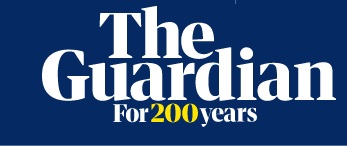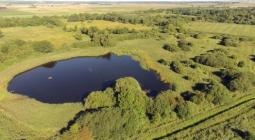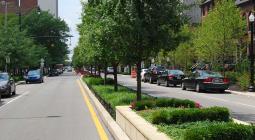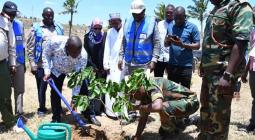New York will plant thousands of trees using new tech to maximize foliage impact
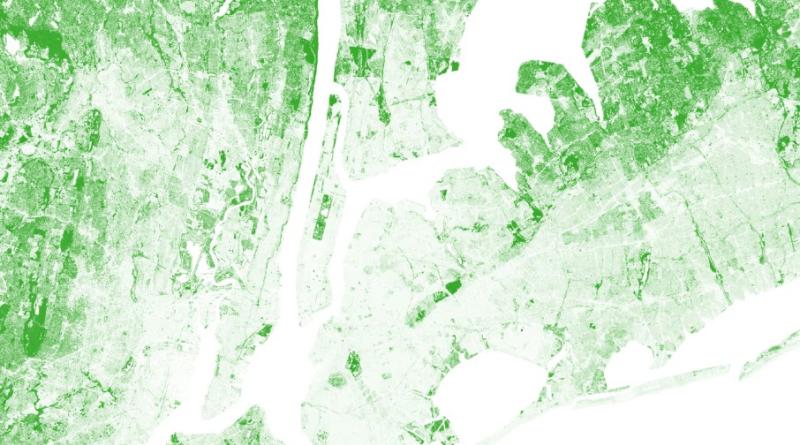
New York City is poised to get a lot more trees. Last month, the city council passed a measure calling for 30% canopy cover by 2035, up from its current cover of 22%; a recent tree census found there’s enough room in the city to plant an additional 250,000 new trees.
More trees, with all their cooling benefits, is a clear win for the environmental justice movement, as cities around the world seek to adapt to hotter temperatures caused by the climate crisis. But where those trees should go – and which kind of trees to plant – is not so straightforward.
“It’s about not just planting more trees, but the right tree in the right spot,” said Alexander Kobald, a researcher at Cornell University. “It’s really focusing on what the spot calls for and making sure the people [who live near the trees] feel heard.”
Kobald led the design of Tree Folio NYC, a 3D mapping tool that could help city planners solve this problem. Released in August, Tree Folio NYC uses lidar scans to offer a “leaf-level” visualization for each of the city’s 7m trees . By focusing on individual trees rather than the city’s aggregate tree canopy, Kobald said, researchers can learn more about how trees contribute to the overall shadiness of specific areas and then better direct resources to those areas.
“Unlike industry-standard tools that tend to look at overall canopy … this research seeks to understand the aggregate impact of trees based on their individual contributions,” said Kobald.
Expanding the city’s tree canopy has year-round benefits. Exposure to trees has been shown to boost immunity, lower stress and blood pressure, enhance mood, sharpen focus and increase energy levels. Children who live in areas with more street trees are less likely to suffer from asthma.
But communities of color in the US have, on average, 33% less tree canopy than majority-white areas, according to American Forests’ Tree Equity Score. That lack of trees contributes to the urban heat island effect, where buildings, roads and other built infrastructure absorb heat, making those neighborhoods significantly hotter than nearby greener neighborhoods. Low-income neighborhoods and communities of color are more likely to be located in urban heat islands, a legacy of segregation and racist redlining practices.
As cities experience longer and more severe heatwaves, those disparities can turn deadly. Black New Yorkers are about twice as likely as white residents to die from heat exposure, according to 2022 city data.
Historically, urban trees have been planted in uniform rows, prioritizing aesthetics and economic development over maximizing their climate benefits. Kobald argues that more strategic placement of trees can enhance their climate impact and ensure they’re more equitably distributed.
“I think the relationship between tree shade and the local context [illustrates] the need to give streets more design attention,” said Kobald.
Kobald points to other improvements that, along with tree placement, could create safer streets for all residents: allocating more pedestrian space on sunnier sides of streets where desirable, protecting bike lanes and investing in overall pedestrian comforts.
“I think what Tree Folio is doing is very helpful when thinking about placement, where to get the most shade, and how to reduce heat,” said Rachel Comte, owner of Urban Canopy Works , a collective of arborists and planners who consult on urban forestry in cities across the US.
This sort of strategic thinking about how and where to plant trees could prove beneficial in dense urban environments like New York City, especially in areas most in need of shade and cooling.
“The trends are historic and persistent; there is less tree canopy in areas that have more social vulnerability in terms of the communities that live there,” said Mike Treglia, lead scientist for the cities team at The Nature Conservancy in New York .
In 2021, The Nature Conservancy released a comprehensive report, The State of the Urban Forest, which found that the South Bronx, a historically low-income area with some of the highest asthma rates in the country, saw notable increases in canopy cover from 2010 to 2017. However, its especially dense city landscape creates limitations as to how much new tree canopy can grow there.
“A lot of this is driven by the built environment,” said Treglia. He points to streetscapes, parks and open-streets initiatives as answers to how more space can be created for street trees.
New York City also passed new urban forestry laws that call for the creation of an urban forest plan, which must be updated every 10 years and monitored every five years using lidar data.
But the new laws do not allocate further city funding, and urban forestry has historically struggled to maintain sufficient funding in New York City.
“Oftentimes funding for trees and tree-related things gets cut first and sort of at a greater pace,” said Emily Maxwell, cities team director at The Nature Conservancy, which advocated for the law.
In September, the New York City mayor, Eric Adams, ordered all city agencies to cut spending by 5% by next spring.
“With the new cuts, the jury is still out on what the impact is going to be on the urban forest,” said Maxwell. “Advocates are quite worried, particularly about some of the newer funding in place.”
One of the more ambitious elements of the new plan is its emphasis on maintenance so that trees make it to maturity.
“Consider the difference between a 3in oak and a 30in oak,” said Comte, of Urban Canopy Works . “That 30in oak provides 70 times more air pollutant interception than the 3in oak,” said Comte. “The mature trees are doing the lion’s share of the work. So we really want trees that will make it to maturity.”
In urban environments, that involves getting creative. The average lifespan of a street tree, which may be exposed to root-eroding elements like pet urine and road salt, is 19-28 years, compared with the 300-400 years that is typical for a tree in other conditions. To increase trees’ chances of reaching maturity, city planners must plant a diverse array of them to ward off disease, favor climate-adaptive species, maintain healthy soil conditions, and allocate enough space – above and below ground – for the trees to grow. It also means tracking trees’ health in real time.
That’s where Tree Folio comes in, Kobald said.
“Our model is able to measure canopy coverage using newer lidar data than existing canopy coverage maps and measure the size and volume of individual canopies, making it easier to see where healthy trees are located and where existing canopies are lacking,” said Kobald.
And those capabilities aren’t confined to New York City. Kobald said the tools developed in Tree Folio’s map can be used for any city with lidar coverage, which includes most urban areas in the US.
